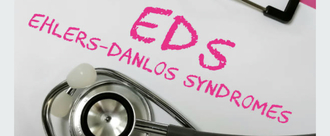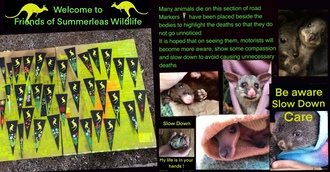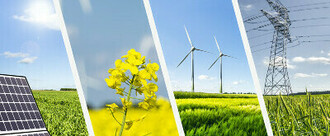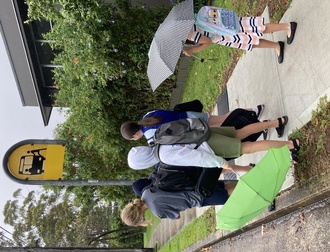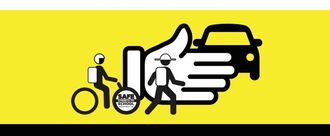-
Make Centrelink a “trauma informed” service.There is a tendency to use the word victim as though it is a person's choice. People who find themselves on income support are generally in this unwilling position through various circumstances beyond their control, and in the main would rather be independent as opposed to a burden on society. If you ask yourself what story is really behind the person begging for change at your supermarket, what might come to mind? Do you consider Domestic Violence? Mental Health challenges? Childhood sexual assault? Are they a descendant of Australia's stolen generations? Marginalised due to ethnicity? A refugee? With all that we now understand regarding mental health and trauma, it's time to implement it where it can make the greatest impact. As an educated and privileged nation, we need to take responsibility for those most vulnerable and create genuine compassionate revisions to the services that are here to assist. As an example, NSW Health has available information on their website about Trauma Informed services detailing considerations and responsible processes for dealing with clients who have suffered trauma, along with the principles of Mental Health Human Rights. https://www.health.nsw.gov.au/mentalhealth/psychosocial/principles/Pages/trauma-informed.aspx Services Australia and Centrelink need to take a health based approach in their delivery of human services, to honour and properly reflect the Department of Social Services own Access & Equity policy. We need to remind ourselves we do not exist on a level playing field as far as our life experiences. The rhetoric of equal opportunity doesn't apply to those handicapped by misfortune of their circumstances.10 of 100 SignaturesCreated by Renee Falez
-
Bent and BrokenAll of us have had some experience with someone experiencing chronic illness. Imagine if it were you, and you have faced a life being told, ‘it’s in your head, oh it’s not that bad, I don’t know what’s wrong!’ This is the common experience of people with rare conditions. The social media groups are filled with horror stories of poor treatment, medical gaslighting and a profound level of medical ignorance. It is appalling that here in Australia we do not have adequate trading of Dr’s in these conditions. I think most of us could recall a time when we have had a bad experience with medical treatment, imagine if that one experience was repeated many times over, over many years. At the same time you just continue to get more unwell. This is what it’s like to have a rare genetic condition. I believe that we can demand better from our decision makers. I believe that this is an opportunity for Australia to lead the world in coordinated treatment and research options for those with these conditions.857 of 1,000 SignaturesCreated by Tracy Finnegan
-
Make Summerleas road safer for all, people and wildlife.We are concerned for the safety of all road users including pedestrians, cyclists, dog walkers, horse riders and wildlife that traverse the road. Speeding drivers ignore speed limits and fail to drive to the conditions killing wildlife at night and increase the risk of accident and injury to people in the day time. Wildlife deaths occur almost every night in this well known black spot. The average for the whole of Tasmania is one wildlife death per 3 kilometres. At certain times of the year this section of Summerleas road has recorded an average of one death per 8.5 metres. A total of 65 wild lives were lost on this section of road between the 4/9/21 and the date of this petition. This figure does not include at least 9 known joeys that also died along with their mothers and 3 injured animals that had to be rescued and euthanised due to the severity of their injuries. The Natural Values Atlas lists 3 threatened mammal species of concern for this area. They are the Eastern barred bandicoot, Eastern quoll and the Tasmanian devil. Several Bandicoots have been killed recently on the road. Eastern quolls and Tasmanian devils have been sighted (and devils accidentally trapped) by residents on properties close to the road. The phycological effect on the community that witnesses this amount of death on such a short section of road must not be overlooked. The danger to human life of injury and death is just as real and also needs to be addressed. There is a concentrated population of horse riders in this area, and close surrounding areas and a long established horse agistment centre actually within the section of road that is our major concern. To reach the few safe and designated riding trails that exist, riders must ride through this section as they have no alternative choice. There have been many incidents of very near misses involving horses, their riders and inconsiderate and speeding drivers. There are no safe pathways or verges. The road has at least one dangerous blind corner and is quite narrow in places with nowhere to safely get off the road. The shoulders are narrow with significant ditches and areas where the ground drops away steeply while other sections have a high embankment. These conditions make it dangerous for horse riders, cyclists, dog walkers and pedestrians in general. Many school children regularly walk to and from school bus pick up, and drop off points. The community includes cycling enthusiasts and people who regularly walk their dogs. Both groups also report incidences where an accident has only been averted by sheer luck, including a dog (on lead) that was lucky to escape with severe bruising after an accident involving a speeding driver. The road is undoubtedly a shared zone and drivers need to be alerted to that fact and encouraged to drive appropriately. Signage alerting drivers to the wildlife death black spot need to be installed and a reduced dusk to dawn speed limit imposed. It has been well studied and documented that a reduction of speed between dusk and dawn would reduce the wildlife deaths on Tasmanian roads by a huge amount. (Hobday 2010 ) Some estimates suggest as many as half the estimated annual 500,000 animals could be saved by reduced speed between dusk and dawn. Other mitigation initiatives should also be explored such as speed humps and new generation virtual fences designed for Tasmanian conditions and wildlife. Other options could include community based and created art works that highlight the issues and engage the public in creative and new ways. The people who have signed this petition request Kingborough Council implement speed restrictions, signage and safety measures to make this particular road a safer place for everyone, people and animals.379 of 400 SignaturesCreated by Ruth Waterhouse
-
Its time... Bathurst Athletics CentreThe Bathurst Region currently does not have a facility able to host a track and field event that is safe and fair. Indeed, this year our two high schools, Bathurst High and Kelso High have been unable to host safe athletics carnivals for the whole school due to the lack of a venue that meets requirements to keep their students safe. Other schools have relied on the kindness of McKillop College to help host safe events. Even so, their track is well shy of the 8 lane, 400m required by basic standards and the field event facilities are well short of the standard needed. Current occupational health and safety standards are not met at council owned facilities, nor are the requirements needed to host an athletics event of any competitive nature. Last year we nearly had a discus in flight hit a member of the public during an athletics club night due to the lack of appropriate fencing. No school in the Bathurst region is currently able to hold an athletics carnival at a venue that meets basic standards for athletics as set down by the IAAF or Athletics Australia. Morse Park is inadequate for the role it is undertaking. The Sports Ground is a round cricket venue unable house the 2X 100 metre straights and 2 x 100 bends of a standard 400m athletics track. Certainly the cricket community would be less than impressed with a javelin landing in the pitch at the centre of this new facility. Given that Track and Field has and continues to form the basis of all sports across its many disciplines since ancient times, we encourage Bathurst regional council move to address this issue in our “sporting city”. We would never ask Cricket to play on a rectangular pitch or Football Codes to compete without posts, but Track and Field has endured substandard facilities in our city for decades. As Bathurst’s population continues to grow, we call on Bathurst Regional Council to identify and set aside land specifically for the future development of a track and field specific venue. This is integral for the future of the sport in Bathurst, facilitating not only local sports clubs but complementing the educational curriculum of all schools, public, catholic and independent across the region. Previous requests have largely fallen upon deaf ears and we believe now is the time for council to commit to such a project moving forward before the increasing urbanisation rules out land capable of hosting such a venue. Track and Field is participated in by every single child at school in our region and therefore this facility would be used annually by every family with a child at school; a high use facility. Indeed between club meets, group training sessions and school’s use, such a venue would receive year round patronage. School carnivals and seasons traditionally run April/May, finishing in November with large carnivals in Sydney. Athletics as a club sport begins in September/October and continues through to March after the State Championships. Done properly, such a venue has the ability to generate over $1 million into the local economy annually, through hosting of larger zone and regional carnivals both for club and school and university level events. Visitors to Bathurst from outside the region would be spending in fuel, meals and accommodation in our city for endurance events and larger 2 day athletic meets. An allocation of land for athletics would need to comfortably accommodate an IAAF standard international 400m athletics track with two 100m straights and two bends, throwing (shot put, discuss, hammer and javelin) and high jump facilities inside the track and have both long jump and triple jump pits (an area of roughly 180 long by 120m wide before amenities). Planning needs to allow for an all-weather surface as and when funding becomes available. This is imperative for our para athletes who currently have no other option but to travel to Sydney or Dubbo to train due to the lack of all-weather synthetic athletic surfaces in Bathurst. In fact, no such venue currently exists between Blacktown and Dubbo. Such a venue needs to be secure so that kindergarten aged children or our Tiny Tots and U6 athletes can compete without fear of wandering onto surrounding roads, go to the bathroom without fear of intrusion or get changed in safe surrounds. Should these conditions be met, local school principals already canvassed would support the project. An all weather track is needed in future to level the playing field with the same track surface conditions regardless of moisture, weather or general surface condition as those in metro areas. The athletics track at Morse Park is no longer appropriate nor safe to use. It does not conform to modern OH&S standards from athletics bodies. Morse Park is a multiple use facility with the busy highway running next door, no appropriate fencing, no canteen, no shelter, no change rooms, showers or adequate toilets. It has inadequate throwing (discuss, shot put, hammer throw and javelin) facilities situated at the site and non conforming runways for jumping. Additionally, most local school principals would struggle to hold a carnival there as it simply would not pass any modern school risk assessment criteria. Bathurst is also not in a position to host University Championships due to the lack of such a facility despite hosting one of the biggest CSU Campuses here in town. This proposed venue will be used by every school and all students and their families at least annually in our sporting city for generations to come. We urge council to closely examine options so that we as a city have the kind of community use facility that can safely, fairly and comfortably host Track and Field events without compromise, from local school to large regional and championship events in the future.916 of 1,000 SignaturesCreated by Bathurst Little Athletics

-
Renewables not Gas for East GippslandGas is a dangerous, polluting fossil fuel. It releases greenhouse gasses that contribute to the horrific bushfires and raging floods we’ve seen devastate communities across the country in recent years. And it isn’t just a disaster for our climate. It’s also bad for our health. Public health experts are concerned about the health risks of cooking with gas in our homes, which can have a similar impact on childhood asthma as living with cigarette smoke. And here in Victoria, we burn more gas per person than any other state. But the good news is that some local councils around the country are bowing to community pressure and taking matters into their own hands - promising to end new gas connections, and help people with the cost of switching to electricity and renewables. And with enough pressure from the community, our local council could join this movement today!3 of 100 SignaturesCreated by Shane Elmore
-
Bus: Lindfield Learning Village; Chatswood WestUntil March 2021 kids in Chatswood West were in area for Chatswood Highschool - 20 min walk away. Now our local school is the Lindfield Learning Village. Two bus rides and a walk taking at least an hour, if you don’t miss your connection. Transport for NSW have suggested a walking path through the bush. This is not safe or practical with laptops and musical instruments. We’re excited to go to LLV, but we’d like to get there in under half an hour with a direct bus route. Given the school boundary changes were outside of our control and only announced at the last minute, we request a bus route for our kids that makes the school run quick, direct and safe.123 of 200 SignaturesCreated by Jen Coleman
-
Safe Streets to School in CanberraChildren in the ACT deserve to safely walk or ride to school (or to public transport to get to school). Walking or riding to school improves children's fitness and independence. However, they are often driven over short distances to school because parents perceive that their child's journey to school is unsafe for part or the whole of the journey. As a result, our streets are subject to tens of thousands more car trips every year, making them even less safe and clogging up roads with unnecessary traffic during morning drop-off and afternoon pick-up. Streets without footpaths and crossings with speed limits higher than 30km/h are not considered safe under the Safe System approach used in Australia and the ACT. The Safe System approach is the basis for and at the heart of all ACT Government transport policy making and efforts to improve road safety and achieve Vision Zero for deaths and serious injuries on our roads. Why we need Safe Streets to School: - Research shows that children cannot judge gaps in traffic consistently when cars go faster than 30km/h to safely cross a street - On streets where there are no footpaths and crossings, reducing the car speed to 30km/h would prevent most accidents: the stopping distance for a car traveling 30km/h is 13m. Stopping distance for a car traveling 50km/h is 37m. The risk of death or serious injury if hit at 30km/h is less than 10%; compared to 90% if hit at 50km/h. It is an unreasonable risk to place our children in harms way on their journey to school. Safe Streets to School will help: - achieve each of the four goals of the ACT Road Safety Strategy 2020-2025 - make Canberra a healthy, active and inclusive city, including being Australia’s most walkable city - the ACT reach its legislated target of zero net greenhouse gas emissions by 2045, because it will help people if they feel safe enough to choose active travel and so reduce greenhouse gas emissions from transport. Our children deserve the right to walk to school (or public transport to get to school), so they can have a healthy and safe future. We do not believe it is fair to wait for an accident to happen and our children to get injured or killed before they can walk or ride safely. Please make our streets to school safe now.53 of 100 SignaturesCreated by Gillian King
-
Education for Sustainability for AllForty years ago, the Australian Association for Environmental Education (AAEE) was formed to champion education reforms (Education for Sustainability is the latest term to describe that) focused on positively connecting students with nature, developing critical thinking and analytical skills and empowering them to help develop solutions to our human induced environmental problems. Now, we need an education revolution to save the planet. In Our campaign supports other international campaigns to develop grassroots support and on the ground efforts by students, educators, and civil society to demand national level commitments from Ministries of Education and Environment. Through this campaign, we will ensure that students in Australia and across the world benefit from high-quality education to develop into informed and engaged environmental stewards. AAEE believes that every school in the world must have compulsory, assessed climate and environmental education with a strong civic engagement component focused on achieving a sustainable society.295 of 300 SignaturesCreated by Stephen Fuller
-
Safe Streets to school in the Inner WestThe council can make a big difference to support active travel. All students living and learning in the Inner West should be able to travel safely to and from school. The streets should encourage them to walk, ride, skate, and roll with friends, without fear of motorised vehicles. We should have the infrastructure and rules in place in the Inner West to ensure that all students can travel safely, have fun and be active, every day. Safe streets to school are better for kids, the community and the environment. Streets without footpaths and crossings with speed limits higher than 30km/h are not considered safe by Australia's safe system approach. The Case for crossings: Research shows that children cannot judge gaps in traffic consistently when cars go faster than 30km/h to safely cross a street On streets where there are no footpaths and crossings, reducing the car speed to 30km/h would prevent most accidents: the stopping distance for a car traveling 30km/h is 13m. Stopping distance for a car traveling 50km/h is 37m. The risk of death or serious injury if hit at 30km/h is less than 10%; compared to 90% if hit at 50km/h. It is an unreasonable risk to place our children in harms way on their journey to school.295 of 300 SignaturesCreated by Bridget Foley
-
Remove sugar filled toxic “foods” from Palm Beach tuck shop and bring back allergy friendly optionsOur children’s developing minds and bodies are something to be nourished and nurtured. By riddling their bodies with sugar, additives, preservatives and colourings is EXTREMELY detrimental to their ability to learn and concentrate. This is backed by years of scientific literature showing the behavioural developmental delays and outbursts that these additives do to our children. Sugar is more addictive then illicit drugs and causes immense destruction to growing bodies and brains. A treat every now and then is a wonderful part of life but it’s wildly concerning for a learning environment to offer and suggest these “foods” as appropriate for consumption every single day to children as young as 4 years old. Our school is our main community and something we should be so proud of and always were. This new change is extremely disappointing and terribly concerning. The consent to our children consuming these junk items daily causing behavioural and physical issues in or children is not something we give! We are asking for the removal of these known detrimental junk items from the school menu and to include more allergy friendly and wholesome food - just like the previous menu options provided.125 of 200 SignaturesCreated by Paris Lucas
-
Mental Health Long Weekends during online schoolingI am sure so many children doing online school right now would agree a 3 day weekend would be good all year round but I think it is possible whilst doing online school. On the 2nd of August, there was the highest number of calls made to the lifeline support in 58 years of 3 345 calls. Especially through these rough times, people deserve a break and maybe even adults would need a 3 day weekend during these times too.72 of 100 SignaturesCreated by Chelsea Wright
-
Education for students struggling academicallyNot all children learn at the same pace, it’s important that these children who are struggling academically to be able to attend a school locally that offers alternative education57 of 100 SignaturesCreated by Franca Di Pasquale

.jpg)
